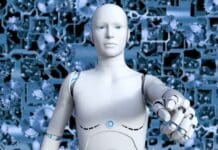This post is also available in:
 עברית (Hebrew)
עברית (Hebrew)
Can technology help us to understand and possibly even solve the crisis of climate change and global warming? With the new technology of robotic unmanned surface vehicles (USVs) developing, scientists can now collect a wide range of data in enormous quantities on the ocean ecosystem, which covers about 70% of the planet’s surface. This information could be used in turn to develop solutions for improving life on land.
The ocean’s topography and ecosystem are still a mystery to mankind. The latest research often involves advanced vessels fitted with advanced and expensive scanning technology. As a result, Saildrone, a company in California, USA, developed a fleet of wind and solar-powered drones (which are very economic in terms of operating resources) that collect detailed data at sea. According to thehill.com, the sea-drone fleet will assist in a research project to map the ocean floor topographically.
In addition to the wide range of data that is collected, the fleet is completely covered with sonar sensors, which transmit real-time information to Almeda Mission Control Center, Texas. As well as measuring and monitoring climate patterns, they also keep track of CO2 levels and can analyze hurricanes. The National Oceanic and Atmospheric Administration (NOAA) receives information about hurricanes in real time, allowing it to predict the path of the storm. Furthermore, they serve as a method for counting sea life (such as fish) and for protecting and monitoring illegal fishing activities. Wind farms (turbines) can be constructed at a number of strategic locations based on the information gathered, which can be used for various applications.
As part of this project, sailing robots will contribute to attempts to produce a complete topographic map of the ocean floor, using sonar sensors to provide models of the scanned content in three dimensions. It is an important project with real implications for the future. Life is believed to have originated at the bottom of the ocean, so understanding the sea is essential for anyone involved in science, especially those who work in geophysics, security, or navigation. As a result, a hundred sea-robots can deliver valuable information, and we can become closer to understanding the world in which we live.


























